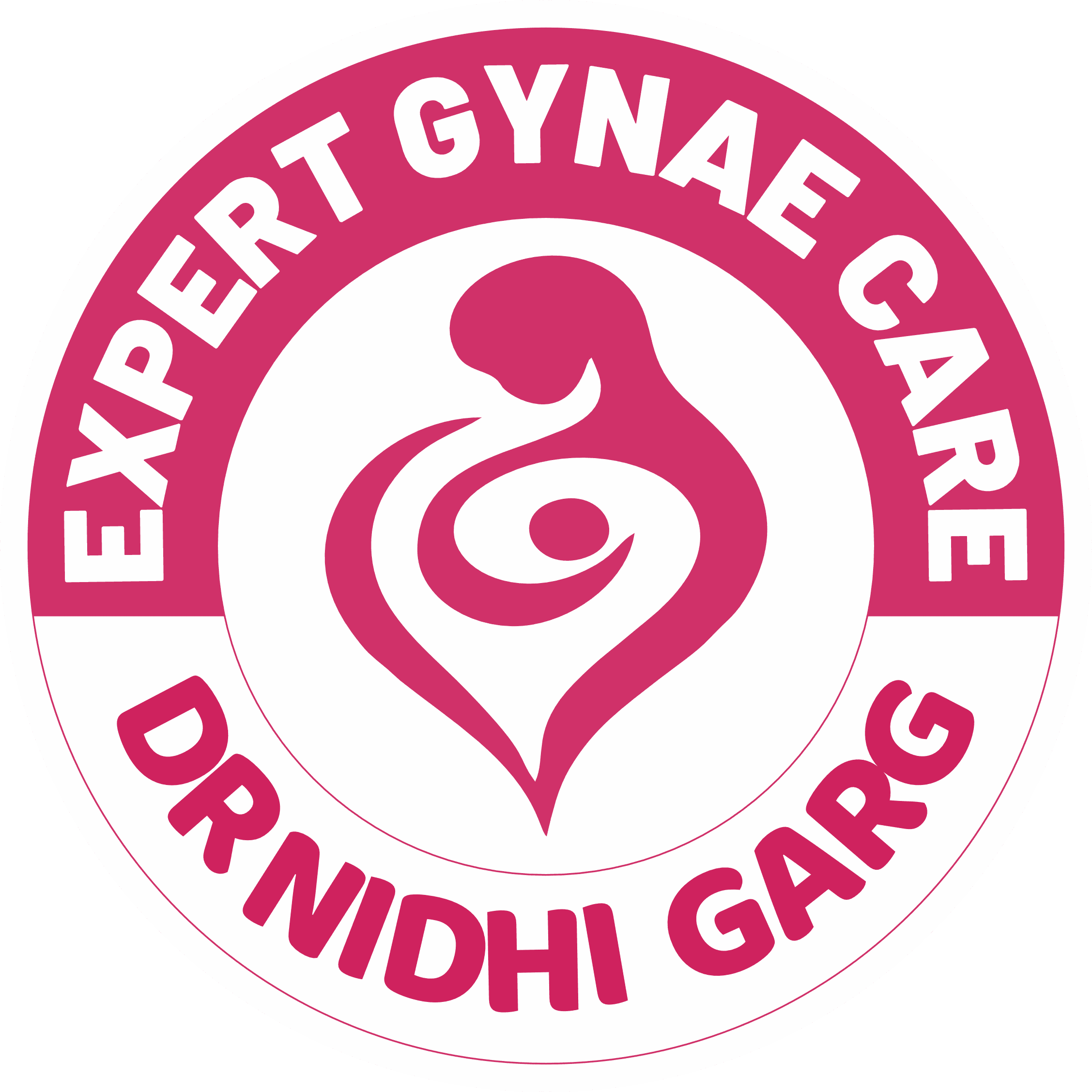Cervical cancer is cancer of the mouth of the uterus and is the fourth most common cancer in women. It is unique as it can be prevented by the administration of cervical cancer vaccine and early detection of precancerous changes with regular screening tests (PAP smear). This makes it one of the very few preventable cancers. (see CERVICAL CANCER)
Table of Contents
What is Cervical cancer vaccine?
The HPV Vaccine or the Cervical Cancer Vaccine prevents cancers caused by Human papillomaviruses (HPV). HPV is a sexually transmitted infection that causes genital warts and is responsible for causing cancers of the cervix, vulva, vagina, anus, penis, and oropharynx. The vaccine is recommended for all females aged 9 years to 45 years and can also be administered to males. In addition to getting vaccinated, it is also very important for all sexually active females above 21 years of age to get regular screening tests for cervical cancer (see PAP Smear test).
How many types of cervical cancer vaccines are available?
Cervical cancer vaccines are of many types depending on the number of strains of HPV against which they are effective. It is pertinent to mention that more than 70% of the cases of cervical cancer are caused by HPV strains 16 and 18 and all available HPV vaccines are effective against these two strains. So any cervical cancer vaccine provides reasonably good coverage against cervical cancer caused by these high-risk strains of HPV.
In addition to covering HPV types 16 and 18, some vaccines are effective against more HPV strains, enhancing the coverage to include genital warts and other vaginal, vulval, anal, and oropharyngeal cancers caused by those HPV strains, thus offering added benefit. The commonly available cervical cancer vaccines are as follows:
CERVARIX: It is a bivalent vaccine, meaning it is effective against two high-risk strains of HPV -16 and 18. These strains are responsible for causing more than 70% of the cervical cancers. It is manufactured by GlaxoSmithKline. It offers effective protection against cervical cancer in women caused by these high-risk strains. It does not protect against genital warts or cancers caused by the other strains of the virus.
GARDASIL: It is a quadrivalent vaccine, meaning that it if effective against four strains of HPV 6, 11, 16, 18. It is manufactured by Merck. It offers protection against genital warts and cancers of the vulva, vagina, and anus, in addition to cancer of cervix, caused by these strains of HPV. It is also licensed for use in males.
GARDASIL 9: Gardasil 9 is a 9-valent vaccine, meaning it is effective against 9 strains of HPV 6, 11, 16, 18, 31, 33, 45, 52, and 58. It is also manufactured by Merck. It is claimed to be effective in the prevention of cancers and precancerous lesions caused by the 9 strains of HPV covered by it, like genital warts, cervical dysplasia, cancers of the cervix, vulva, vagina, anus, and certain head and neck cancers caused by these HPV strains. It is recommended for use in both males and females 9-45 years of age. Among all the HPV vaccines available, Gardasil 9 offers the maximum coverage for diseases caused by HPV, but is expensive as compared to the other options.
It is important to note that almost all commercially available vaccines cover the two high-risk HPV strains for cervical cancer -16 and 18 and hence are equally effective in preventing cervical cancer caused by these high-risk types. Vaccines covering HPV types 6 and 11 protect against genital warts and those covering types 31, 33, 45, 52, and 58 offer additional protection against cancers of the cervix, vulva, vagina, anus, and oropharynx.
How is cervical cancer vaccine administered?
The cervical cancer vaccine is administered as an intramuscular injection. This means that the injection is given in one of your muscles. The common sites of injection are:
- Deltoid muscle: This is your shoulder muscle on the side of your upper arm, where your shoulder joins your body. This is one of the most common sites for intramuscular injections in adults. It is not the preferred site in small children as they have very little deltoid muscle mass; so anterolateral aspect of the thigh is preferred in children for intramuscular injection.
- Thigh muscles: The vaccine is administered in the muscles of the anterolateral aspect of your thigh. This site can be used safely both in adults and children.
How many injections of Cervical cancer vaccine are needed?
The cervical cancer vaccine is administered as a two-dose schedule or a three-dose schedule, depending on the age at which the vaccine is being administered. This is best determined by your healthcare provider. Please contact your healthcare provider for planning your vaccination. As a general rule:
9 -15 years of age: Two doses at a gap of 6-12 months.
15 years of age: Three doses at 0, 2, and 6 months, 0 being the first dose. This means that the second dose is given after 2 months of the first dose and the third dose is given after 6 months of first dose.
Who should receive the vaccine?
- Every female aged 9 years to 45 years should get the cervical cancer vaccine.
- Ideally, the vaccine should be administered to children aged 9 years and above as soon as possible, before they become sexually active. This is because once, they become sexually active, they may contract the virus. HPV vaccination done after that may protect them from future infections, but can not treat the ones already there.
- In some countries, the vaccine is licensed for use in boys as well. If it is licensed for boys in your country, the boys should receive it too. It helps protect them from genital warts and also from cancers of the penis, anus, and oropharynx. In addition, it reduces the chances of them contacting the virus from one partner and transmitting to another.
- In certain conditions, the vaccine may be contraindicated for you. Contact your healthcare provider for more information and to plan your vaccination.
Who should not receive the HPV vaccine?
- Allergy: Allergy to a previous dose of the HPV vaccine or a known allergy to any of the components of the vaccine, are contraindications for receiving the vaccine. Always inform your healthcare provider of any known allergies that you had in the past.
- Ongoing illness: Vaccines should generally be avoided if you have any intercurrent illness, infection, or fever and the HPV vaccine is no exception. You should wait for the illness to go away before getting your vaccination.
- Pregnancy: Avoid HPV vaccine if your are pregnant.
Limitations/Side effects of the HPV vaccine
The HPV vaccines are generally safe, effective, and well-tolerated. However, as in other vaccines, some side effects may occur. These side effects tend to be mild and resolve spontaneously in most cases. Following are some of the side effects that some people may encounter:
- Pain at the injection site: Like any other injection, pain at the injection site may be felt and usually resolves in a day or two, without the need for nay painkillers.
- Swelling and redness at injection site: These are also usually transient and resolve spontaneously.
- Dizziness or Syncope: Some patients may feel light-headed and may have dizziness, syncope or presyncope after the vaccine. So it is advised to stay in observation for 15-30 minutes after the vaccine, before leaving the doctor’s office.
- Headache or Body aches
- Nausea or vomiting
- Severe allergic reaction or anaphylaxis: Although rare, some people may have severe life-threatening allergic reactions to the vaccine. This phenomenon is called anaphylaxis and is a possibility with very medication or vaccination that we take.
- Limitations: Like all other vaccines, the HPV vaccine can prevent an HPV infection, but can not treat an HPV infection that is already there or reverse the changes caused by previous HPV infection. Moreover, each HPV vaccine can only protect you from certain strains of the virus that it covers, but can not protect you from the other strains.
Do I need PAP smear test if I have received the HPV vaccine?
Yes, you must continue regular screening tests (PAP smear), even if you have received the HPV vaccine. Remember that no vaccine is 100% effective and no vaccine covers all the HPV types. So the HPV vaccine reduces your chances of getting an HPV infection, but does not eliminate the risk completely. Also, the vaccine protects you only from the HPV types that it covers; but you are still prone to the HPV types that the vaccine does not cover.
PAP smear testing should begin at the age of 21 years and repeated every three years thereafter to detect any precancerous changes at an early stage, when they can be easily managed.
Should I get HPV vaccine if I already have HPV infection?
Yes, you should still get vaccinated, even if you have HPV infection.
The vaccine may not cure your current infection or protect you from the types of HPV that you are already infected with, but it will offer protection from the HPV types that you are not infected with and that are covered by the vaccine. So generally speaking, everyone aged 9 to 45 years should get vaccinated, irrespective of their HPV status. You should weigh the pros and cons in your individual case with your healthcare provider and plan your vaccination accordingly.
Carry home message
HPV vaccine is a safe and effective method of preventing HPV infection which is a common cause of genital warts and many cancers in both men and women. The vaccine should be administered to everyone aged 9 years and above. For planning your vaccination, contact your healthcare provider who will weigh the risks and benefits in your case and formulate a vaccination plan for you. Stay healthy!

For more such interesting information on women's health, kindly visit our website Expert Gynae Care and our YouTube channel @drnidhigarg
To consult Dr. Nidhi Garg, please visit us at Kamal Hospital, Doaba Chowk, Jalandhar-144004 or Visit our website kamal Hospital jalandhar or Expert Gynae Care


